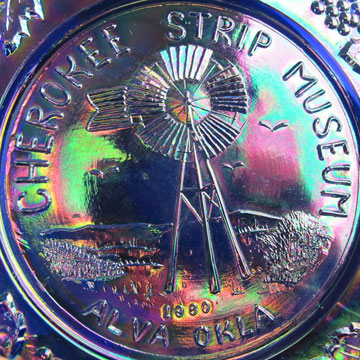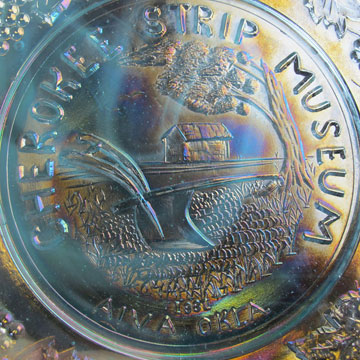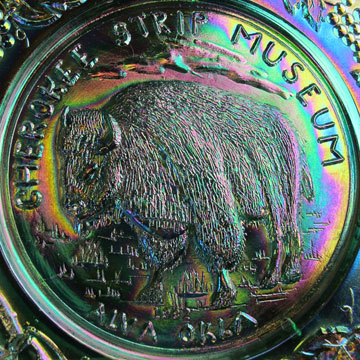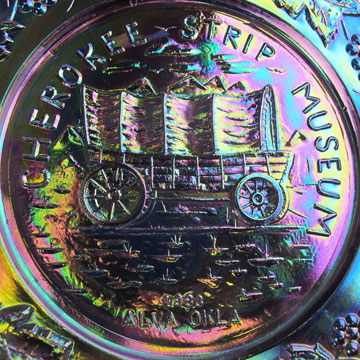
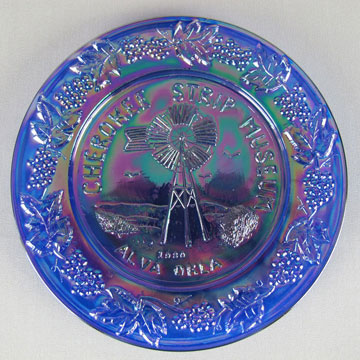
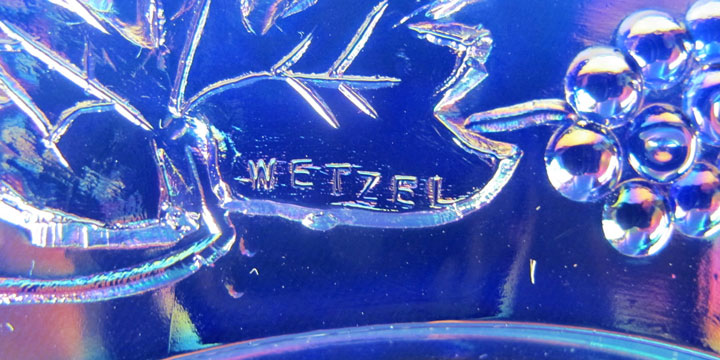

1979 Cherokee Strip Museum Plate - Red/Amber - Indian on Horse
1980 Cherokee Strip Museum Plate - Blue - Windmill
1981 Cherokee Strip Museum Plate - Ice Blue Slag - Plow and Homestead
1982 Cherokee Strip Museum Plate - Green - Buffalo
1983 Cherokee Strip Museum Plate - Light Amethyst - Covered Wagon
1984 Cherokee Strip Museum Plate - Green - Swallows

